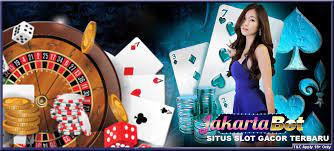Introduction
The Joker card, often considered the wild card in various card games, holds a unique position in the deck. With its vibrant illustrations and dual meanings, the Joker transcends its role as a mere game piece to embody various cultural, social, and artistic significances. In this article, we will explore the history, significance, and various interpretations of the jokercard balance in gaming and popular culture.
History of the Joker Card
The Joker card originated in the United States during the mid-19th century, primarily as a trump card for the game of Euchre, which was immensely popular among American card players. The card was designed to provide a wild card that could substitute for any other card, thus adding an element of unpredictability and strategy to the game.
As the popularity of card games grew, so did the Joker’s role in the standard deck. The Joker became a fixture in the modern deck of playing cards, usually depicted as a clown or jester, complete with colorful attire and a whimsical expression. Its design often varies by manufacturer, but the essence of the character remains consistent.
Symbolism and Interpretation
The Joker card embodies several layers of meaning:
- Wild Card: In many games, the Joker serves as a wild card, representing unpredictability and versatility. This element of surprise can turn the tide of a game, making the Joker a valuable asset in card play.
- Chaos and Anarchy: The Joker often symbolizes chaos and disorder, reflecting the unpredictable nature of life. This aspect is famously captured in literature and film, most notably in the portrayal of the Joker character in the Batman franchise, where it represents anarchy and the antithesis of order.
- Foolishness and Wisdom: The Joker, or jester, has historically been a figure of paradox. While often seen as foolish and comical, the jester also serves as a wise observer, providing commentary on society and revealing truths that others may overlook. This duality makes the Joker a compelling figure in literature and art.
The Joker in Popular Culture
The Joker’s influence extends far beyond card games. It has permeated various facets of popular culture:
- Literature and Film: The character of the Joker in the Batman series is perhaps the most notable example. Portrayed by actors like Heath Ledger and Joaquin Phoenix, the Joker has become a cultural icon representing chaos, morality, and the complexity of human nature.
- Art: Artists often use the Joker motif to explore themes of duality, identity, and the human condition. From street art to high art, the Joker serves as a canvas for expressing societal critiques and personal narratives.
- Gaming: In video games and tabletop games, the Joker often appears as a character or element that disrupts standard gameplay, introducing new challenges or opportunities.
Conclusion
The Joker card, with its rich history and multifaceted symbolism, has evolved from a simple card game piece to a powerful cultural icon. Its duality as a wild card and a symbol of chaos and wisdom allows it to resonate across various mediums, from gaming to literature and art. As we continue to explore and reinterpret the meaning of the Joker, it remains a reminder of the unpredictability of life and the complexities of human nature. Whether in the hands of a player or the pages of a story, the Joker card will continue to enchant and intrigue for generations to come.
